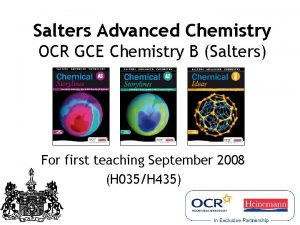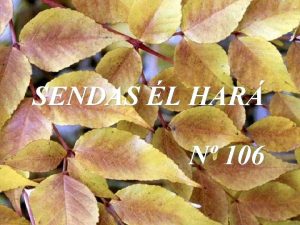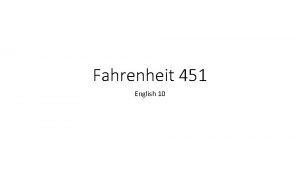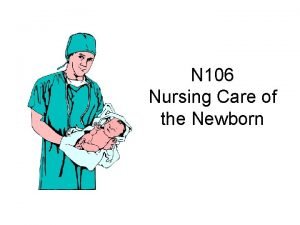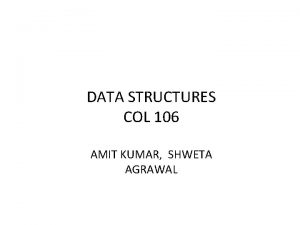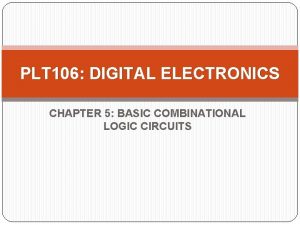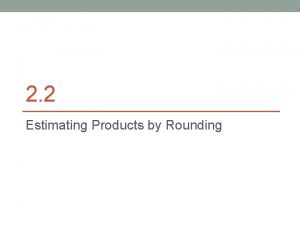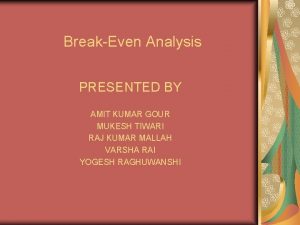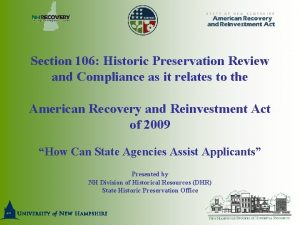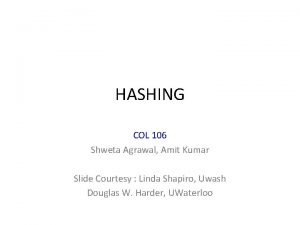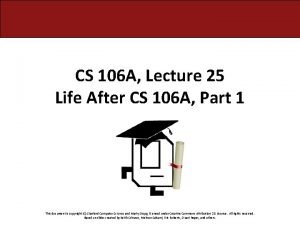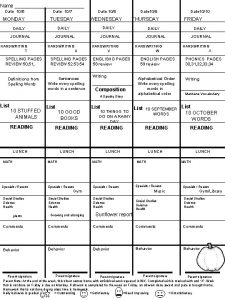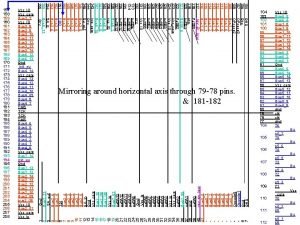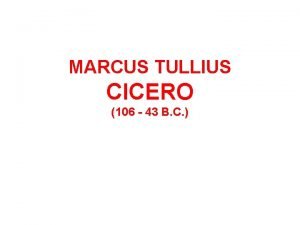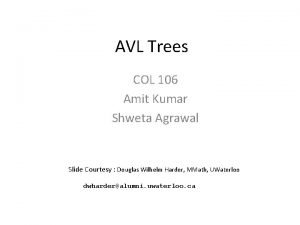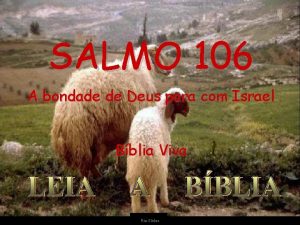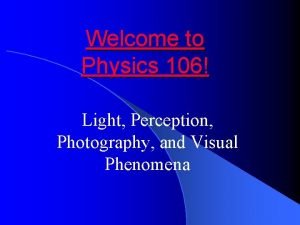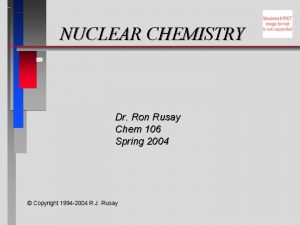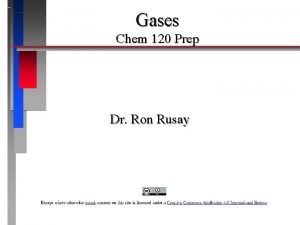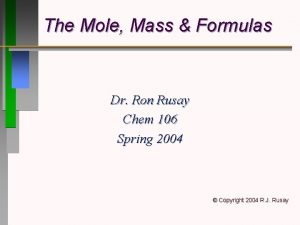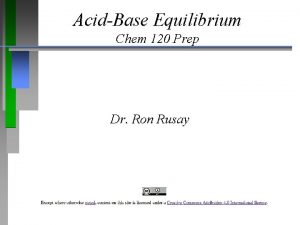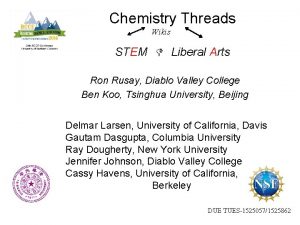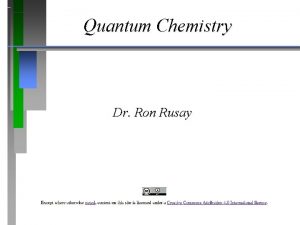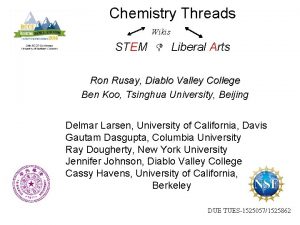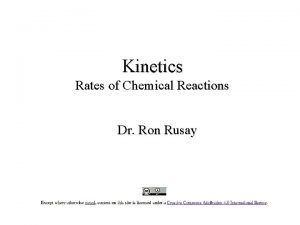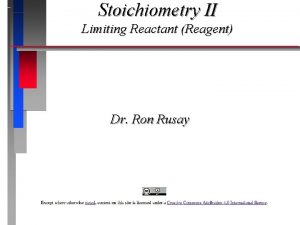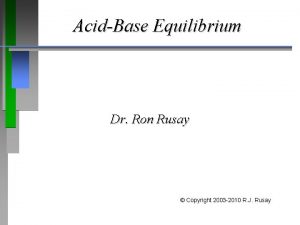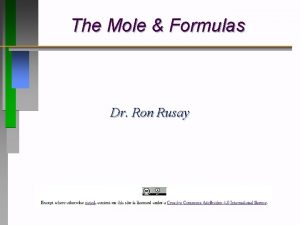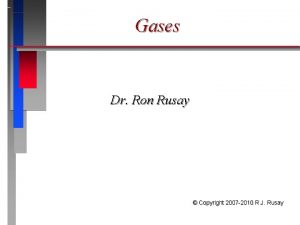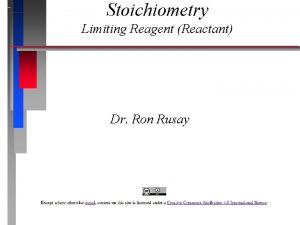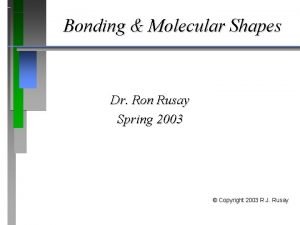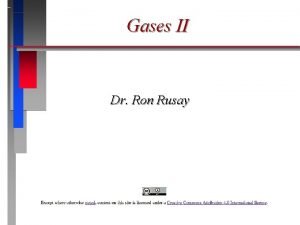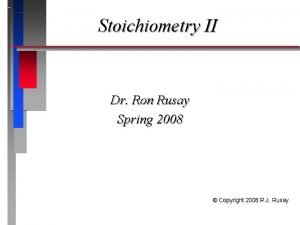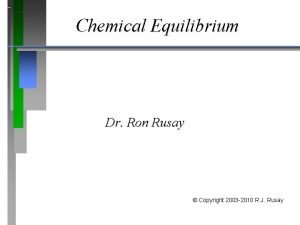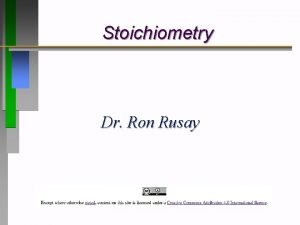Chem 106 Practical Everyday Chemistry Dr Ron Rusay




























- Slides: 28

Chem 106 Practical Everyday Chemistry Dr. Ron Rusay Diablo Valley College Spring 2003

What’s in the box? • Take a look at one of the boxes coming around. • Do not open it. • Write down a description of what is in the box.

Chem 106’s Homepage

Science, Mathematics, Chemistry & the World Around You · · · What is science? …. What is chemistry? VOCABULARY: Key Terms/ Communication Comparisons and Conversions : Ratios, Percent, Density · Mathematics / Arithmetic: Powers of Ten, Scientific Notation · · Measurement & Units: (metric) Matter : Classification & Properties © Copyright 1998 -2003 R. J. Rusay

Observation: Perception Science relies on observation. • Can more than one observation be correct? • What do you see?

Science: Problem Solving Can you connect all of the dots with four straight lines without taking a pen or pencil from the surface?

Science: Problem Solving

Science: Problem Solving Can there be more than one solution for the same problem? Of Course!

What’s in the box? • Open the box. • Describe what is in the box. • The content of the boxes are different. • How can you provide a single, “correct”, description of what’s in the box?

Ancient Science: The Greeks What is around us?

Science is driven by asking questions & making predictions. The Scientific Method is a way to develop answers.

Some Possible Steps in the Scientific Method · 1. qualitative - quantitative · - · · Observations 2. Formulating hypotheses - possible explanation for the observation · 3. Performing experiments - gather new information to test whether the hypothesis is valid


Chemistry is the Study of Matter Can mean the study of anything and everything! · · Observed in all of its forms & behaviors. Sub-categories • • Can matter be observed at all times? Organic: carbon Inorganic: non-carbon Organometallic: Organic + Inorganic Analytical: What? , How much? , How pure? Biological / Biochemistry: living organisms Physical: energy, changes, rates Nuclear: the nucleus Environmental: interdisciplinary, eg. Oceanography © Copyright 1998 -2003 R. J. Rusay

Modern Science & Chemistry http: //www. mpg. de/news 98/news 20_98. htm • Would this motivate you to pursue a career in science/chemistry? • Why would this “excite” a scientist, and what does dating have to to with it?

How do we know how old things are ? …like sloth dung Dating! Radiocarbon dating that is. It allows determining the age of biological artifacts like dung up to about 40, 000 years old. This method provides an direct measurement of age. • How do we determine our own age? • Can this work for anyone or any animal that ever lived?

Match the years in the second column with choices from the first column B C E I F L K G D A H J


Types of Basic Measurements • MASS (weight) • LENGTH • VOLUME (occupied space) • TEMPERATURE • TIME • Qualitative vs. Quantitative • Eg. Qualitative: Old (dung) vs. Young (you? ) • Quantitative: 38, 000 year old (dung) vs. a 19 year old (you? ) © Copyright 1998 -2003 R. J. Rusay

What is the length of the rod? Different measurement tools give different numbers: Which ruler is better? Did the Hubble space telescope use English or metric units in its construction? …. . navigating the Mars Climate Orbiter?

Volume (Liquid Measurement Tools)


Relative Temperature Scales

Temperature

Representations of Measurements: An example of a relative comparison using length to represent time • TIME: 38, 000 year old (dung) vs. 20 year old student • LENGTH: • Use lines to represent the respective ages that can be easily drawn on the classroom’s blackboard. • Let 1 inch equal some period of time: 1 yr, 5 yr, 100 yr, 1000 yr. (Select an appropriate one. ) • 38, 000 year old (dung) vs. 20 year old student © Copyright 1998 -2003 R. J. Rusay

Representations of Measurements An example of a relative comparison using length to represent time • TIME: LENGTH; 38, 000 year old (dung) vs. 20 year old student • 1 in= 1 yr: dung = 38, 000 in (> 1/2 mile) - student = 20 in • 1 in= 5 yr: dung = 7, 600 in (> 2 football fields) - student = 4 in • 1 in= 10 yr: dung = 3, 800 in (> 100 yds) - student = 2 in • 1 in= 100 yr: dung = 380 in ( 31. 6 feet) - student = 0. 2 in • 1 in= 1000 yr: dung = 38 in ( 3. 16 feet) - student = 0. 02 in © Copyright 1998 -2003 R. J. Rusay

Representations of Measurements An example of a relative comparison using length to represent time • TIME: LENGTH; 38, 000 year old (dung) vs. 20 year old student • 1 in= 1 yr: dung = 38, 000 in (> 1/2 mile) - student = 20 in • 1 in= 5 yr: dung = 7, 600 in (> 2 football fields) - student = 4 in • 1 in= 10 yr: dung = 3, 800 in (> 100 yds) - student = 2 in • 1 in= 100 yr: dung = 380 in ( 31. 6 feet) - student = 0. 2 in • 1 in= 1000 yr: dung = 38 in ( 3. 16 feet) - student = 0. 02 in © Copyright 1998 -2003 R. J. Rusay

Chemistry in your car: Airbags Count how many words are new to you. A) Zero B) 1 -5 C) 6 -10 D) >10
 Rusay
Rusay Chemistry research investigation example
Chemistry research investigation example Ccea gce chemistry practical support
Ccea gce chemistry practical support Ocr chemistry b
Ocr chemistry b Error n-106
Error n-106 Iat 106
Iat 106 Fahrenheit 451 hook
Fahrenheit 451 hook Prime composite numbers chart
Prime composite numbers chart Iec 62334
Iec 62334 106. newborn baby checklist
106. newborn baby checklist Col 106 amit kumar
Col 106 amit kumar Plt 106
Plt 106 Nur 106
Nur 106 Round the factors to estimate the products
Round the factors to estimate the products Col 106 amit kumar
Col 106 amit kumar Section 106 compliance
Section 106 compliance Col 106
Col 106 Cs 106
Cs 106 Sqte-106
Sqte-106 Iat 106
Iat 106 Juvenile law definition
Juvenile law definition 105 106 107
105 106 107 106 pal
106 pal 106+43
106+43 生命聖詩 106
生命聖詩 106 Fas 87
Fas 87 Col 106 amit kumar
Col 106 amit kumar Salmo 106
Salmo 106 Physics 106
Physics 106



